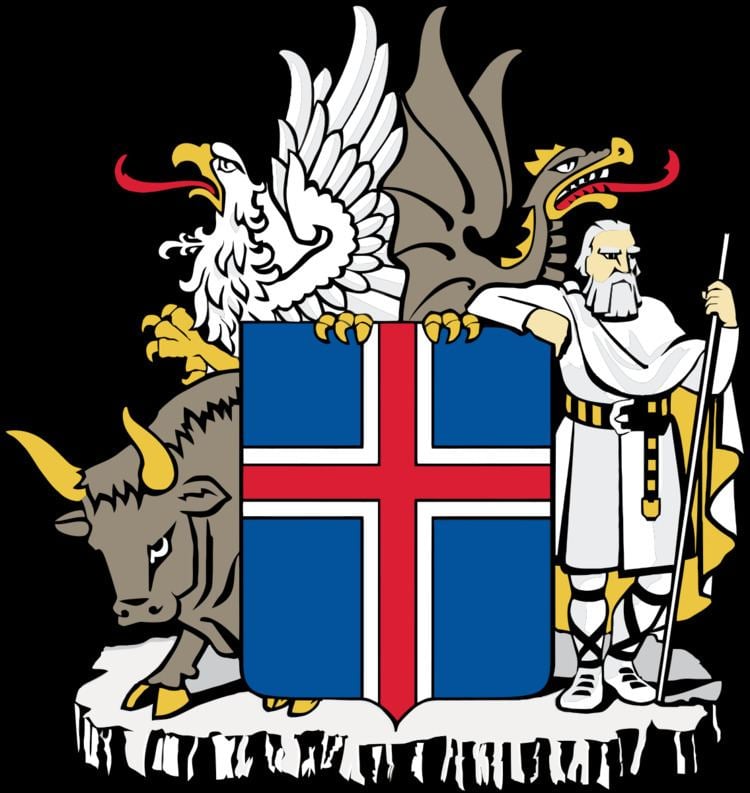Country Iceland Type Supreme court Phone +354 510 3030 Established 16 February 1920 | Number of positions 9 | |
 | ||
Composition method Presidential nomination with Minister of the Interior confirmation Authorised by Similar Parliament House, University of Iceland, The National Gallery of, Innanríkis, Central Bank of Iceland | ||
The Supreme Court of Iceland (Icelandic: Hæstiréttur Íslands, lit. Highest Court of Iceland) is the final court of appeal in the judiciary of Iceland. It is also the oldest court of law in Iceland and the higher of the two Icelandic court branches, the other being the District Courts of Iceland.
Contents
Notwithstanding the fact that the Court is not mentioned by name in the Constitution of Iceland but only its justices, it is validated in the Courts Act No. 15/1998. The Supreme Court of Iceland is located at the Dómhúsið (Courthouse) at Arnarhóll in Reykjavík, a building that was specially built for that purpose and that came into use in 1996.
The current President of the Court is Markús Sigurbjörnsson.
History
The Court was founded under the Supreme Court Act No. 22/1919 and held its first session on 16 February 1920. Previously, the Landsyfirréttur, or National High Court of Iceland, had been the highest domestic court, but a line of appeal had been available to the Supreme Court of Denmark in Copenhagen. The establishment of the Supreme Court moved the final word in Icelandic cases home to Iceland.
The first justices of the Supreme Court were Kristján Jónsson (President), Halldór Daníelsson, Eggert Briem, Lárus H. Bjarnason and Páll Einarsson. The first three men had been the judges of the old National High Court, which had operated throughout the 19th century but was abolished with the founding of the Supreme Court of Iceland in 1920.
Justices
The Court is composed of nine justices appointed by Presidential nomination with Minister of the Interior confirmation and presided over by the President of the Court or the Vice-President in his absence.
The Supreme Court justices elect a President and a Vice-President. The President of the Supreme Court of Iceland manages the affairs of the Court, directs court sessions and divides tasks among the justices and the employees of the Court and maintains disciplinary supervision. He is responsible for the operation and finances of the Court and represents the Court towards the public. Under Article 8 of the Constitution of Iceland the President of the Supreme Court is one of the three holders of the power of the President of Iceland in his absence, the others being the Prime Minister and the Speaker of Parliament.
As of February 2014, the justices of the Supreme Court are:
Procedure
The Court operates in two divisions, where either three or five justices sit to hear a case before the Court. For especially important cases, the President of the Court may decide that the bench be constituted by seven justices. When a case is heard by five or seven justices, these shall usually be the most senior justices on the Court. The main rule is that cases are presented orally before the Supreme Court, and the court sessions are generally open to the public. The President of the Supreme Court presides over the session or, in his absence, the Vice-President. If neither of them is hearing the case, the most senior justice in session will preside.
Lawyers appearing before the Court wear black robes with blue lapels, whilst the justices wear distinctive blue robes with black lapels, a custom which reputably began with the suggestion of the first lawyers to appear before the Supreme Court, Eggert Claessen and Sveinn Björnsson (later President of Iceland).
As soon as an oral case presentation is finished, the justices retire for a closed meeting to discuss and vote on the case. One justice will be held responsible for introducing the matter and proposing a solution of the case and he or she will usually write the opinion of the Court. If the views of the reporting justice do not have the support of a majority of the justices, the President will ask another justice to write the Court’s opinion, and the minority justices decide who will write a separate dissenting judgement. Finally, a complete judgement will be prepared, and the justices will sign a single copy which is filed in the Book of Opinions of the Court.
For cases where members of the Cabinet are suspected of criminal behavior, the Landsdómur, which includes the Supreme Court justices, sits instead of the Supreme Court.
Building
After the transfer of power from Denmark, the Court was first housed in the Old Penitentiary Building on Skólavörðustígur in Reykjavík. In 1949 it moved to the former court building on Lindargata. 1993 saw a competition to design a new home for the Court, which was won by Margrét Harðardóttir and Steve Christer of Studio Grandi, Reykjavík. The Icelandic Minister of Justice dug the first spade of ground for the new Courthouse of the Supreme Court of Iceland at Arnarhóll on 15 July 1994, laid the cornerstone of the building on the Court’s 75th anniversary, 16 February 1995, and handed it over to the Court for use on 5 September 1996.
